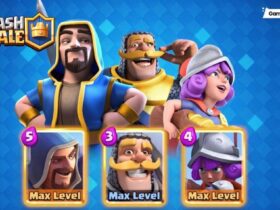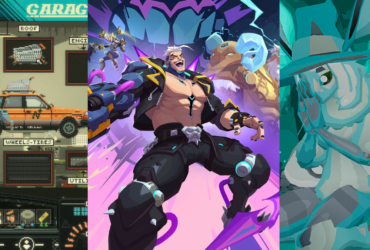A surprising contradiction sits at the heart of PC gaming: the medium’s most open platform is nevertheless dominated by a single storefront. That storefront belongs to Valve, it’s called Steam, and despite plenty of challenges in the two decades since it launched, no one has yet come close to unseating the Counter-Strike maker’s grip on the PC gaming market. Amazon was one of the companies that tried, and one of its retired VPs recently explained his take on why nobody has succeeded.
“As VP of Prime Gaming at Amazon, we failed multiple times to disrupt the game platform Steam,” Ethan Evans, who retired as VP of Prime Gaming in 2020 after a 15-year stint at the company, wrote on LinkedIn last week. “We were at least 250x bigger, and we tried everything. But ultimately, Goliath lost.”
Evans listed three initiatives Amazon pursued to try and steal PC gaming market share away from Steam. The first was acquiring a small PC game store called Reflexive Entertainment and trying to scale it. The second was building out its own PC game store and using Twitch’s popularity to drive players toward it. Finally, there was Luna, Amazon’s game streaming service.
None of these made a dent, and efforts by EA, Ubisoft, Bethesda and other publishers to build stores by locking their respective PC games behind annoying proprietary launchers eventually failed as well. Even the Epic Games Store, launched back in 2017, is still a Fortnite launcher first and a Steam rival second. Despite giving away tons of free games every year to people just for logging on, Epic’s storefront feels like its stalled out (though lots of new features are on the way in 2025).
“The mistake was that we underestimated what made consumers use Steam,” Evans wrote. “It was a store, a social network, a library, and a trophy case all in one. And it worked well. At Amazon, we assumed that size and visibility would be enough to attract customers, but we underestimated the power of existing user habits. We never validated our core assumptions before investing heavily in solutions. The truth is that gamers already had the solution to their problems, and they weren’t going to switch platforms just because a new one was available.”
What the retired executive is essentially saying is that Amazon thought people would show up simply because it was Amazon, when if it really wanted to take Steam on, it needed to actually give players a reason to switch. “We needed to build something dramatically better, but we failed to do so,” he wrote. “And we needed to validate our assumptions about our customers before starting to build. But we never really did that either. Just because you are big enough to build something doesn’t mean people will use it.” It’s a testament to Valve as much as it’s an indictment of C-suite brain rot.
For all of the valid criticism of Steam—the lack of moderation, terrible discovery tools, Nazi-ridden forums, and aging infrastructure—it still works pretty damn well. Then you have all of the ecosystem lock-in, from the social network aspect to new Steam sales adding more cheap games to players’ libraries every season. Plus it’s now basically the de facto launching ground for the biggest unexpected hits of any given year, from Balatro to Palworld. In addition to everything else, Steam is one of the main drivers of the attention economy around gaming, which is why a cool timed exclusive might hit the Epic Games Store and you never hear a peep about it.
It doesn’t feel great that one company controls so much about one of the largest and fastest-growing ways people play games, but then again it also sucked when companies tried to compete by making everyone maintain five different windows for booting up PC games. Maybe instead of competing for market share and platform dominance, more companies could follow GOG in creating a DRM-free future for PC gaming. Unlikely, but no more so than unseating Steam at this point.
.












Leave a Reply